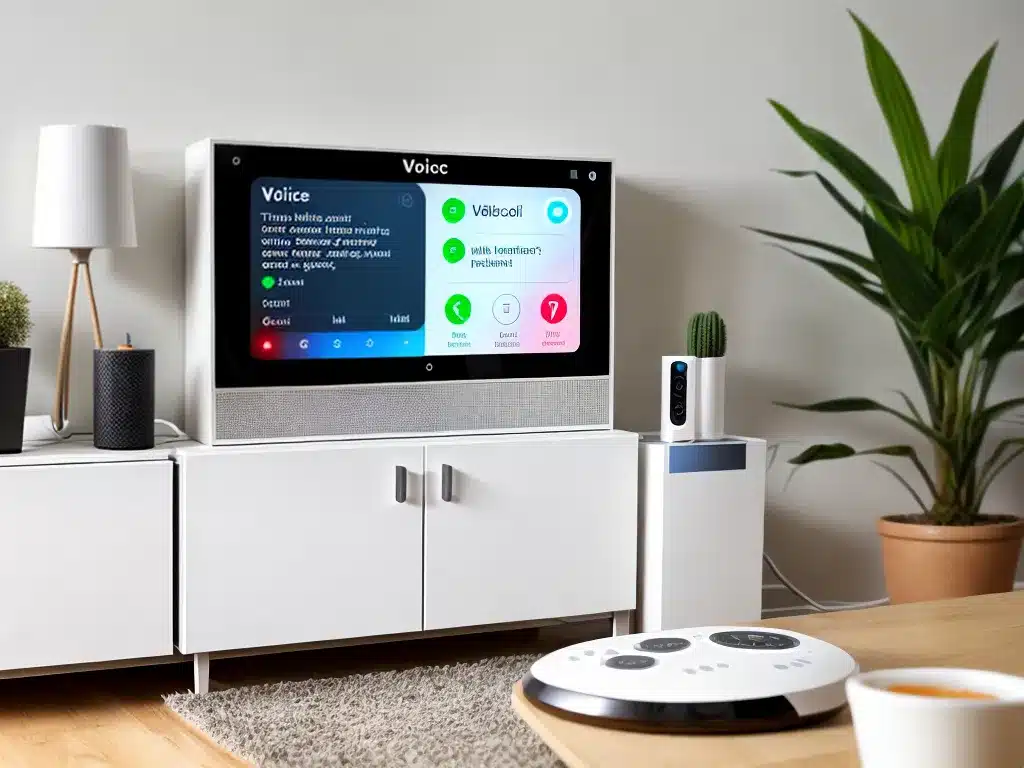
Introduction
Voice control technology has exploded in popularity in recent years. With smart speakers like Amazon Echo and Google Home becoming commonplace in households across the country, more and more people are getting used to controlling things with their voice. But voice control is moving beyond just smart speakers. Voice control is becoming a ubiquitous part of the smart home experience.
In this article, we’ll look at the ways voice control is transforming how we interact with our homes. We’ll explore the benefits voice control offers, look at current limitations and challenges, and peek into the future of how speaking to our homes will become as natural as speaking to each other.
Current Voice Control Capabilities
Many smart home devices already integrate voice control functionality in some form. Here are some of the most common ways we’re using our voices to control things in the home:
Smart Speakers
- Amazon Echo, Google Home
- Control smart home devices like lights, thermostats
- Request information, play music, set timers/alarms
Home Entertainment
- Android TV, Fire TV, Apple TV
- Voice search for content
- Basic playback control
Smart Lighting
- Philips Hue, LIFX, Nest
- Turn lights on/off, change color and brightness
Smart Appliances
- Refrigerators, ovens, washers, AC units
- Basic on/off control, changing settings like temperature or cycle
Smart Locks
- August, Nest x Yale Lock
- Lock/unlock doors
Home Security
- Ring, Nest, SimpliSafe
- Arm/disarm security system
So in many areas of the home, we already have basic voice control capabilities. But this is really just the beginning of what’s possible.
Benefits of Voice Control
There are some key benefits that voice control offers for the smart home:
Convenience
- Hands-free control is easier than finding a phone or remote
- Helpful when hands are full, like cooking in the kitchen
Natural Interface
- Speaking feels more natural than using an app or tapping buttons
- Allows for richer, more conversational interactions
Accessibility
- Voice control doesn’t require good eyesight or dexterity
- Opens smart homes to more people
So voice makes things easier, more natural, and more accessible. It removes some of the friction we experience with traditional interfaces.
Current Limitations
However, there are still some key limitations in many current voice control implementations:
Narrow Capabilities
- Most devices allow only basic on/off or playback commands
- Full range of device functions isn’t exposed
Fragmentation
- No universal standard, so commands vary across platforms
- Remembering the right phrases is challenging
Privacy Concerns
- Always-listening devices in the home spark privacy fears
- Lack of control over how voice data is used
Spotty Reliability
- Voice recognition isn’t perfect, leading to misheard commands
- Performance varies greatly between platforms
So while promising, voice control for the smart home still has a ways to go. But new advances are helping overcome these current hurdles.
Advances Making It Better
Some recent technological advances are helping voice control work better in the home:
On-Device Processing
- Voice recognition happens locally on the device
- Helps address privacy concerns over data in the cloud
Contextual Awareness
- Devices recognize user identity and tailor responses
- Allows for personalized, conversational interactions
Multimodal Input
- Voice combined with touch displays or gestures
- Makes interactions flexible and robust
Smart Home Platform Integration
- Unified voice control across different smart home brands
- Platforms like Alexa, Google Assistant consolidate fragmentation
So voice control is getting smarter, more secure, more flexible and better integrated into full smart home ecosystems.
The Future of Voice Control at Home
Voice control for the smart home still has room for innovation, but here are some exciting possibilities on the horizon:
Truly Conversational Interactions
- Beyond simple commands to natural, contextual dialogue
- Voice assistants that understand user intent and can clarify questions
Hyper-Personalization
- Voice recognition that identifies each family member
- Systems tailored to individual preferences and routines
Ambient Computing
- Always-available, ubiquitous voice control throughout the home
- Convenience of speaking naturally wherever you are
Connectivity Beyond the Home
- Voice control of devices outside the home
- Checking in on the house while away, managing the car’s systems, etc.
So in the not-too-distant future, we may regularly chat with our homes, which will know us deeply and help us manage aspects of our lives far beyond the front door.
Conclusion
Voice control has already had a significant impact on the smart home, but it’s still early days. As the technology improves, gets woven deeper into smart home ecosystems, and becomes more conversational and personalized, voice control promises to fundamentally change how we interact with our living spaces. The future is bright for the natural simplicity and convenience of controlling things with just our voices.












